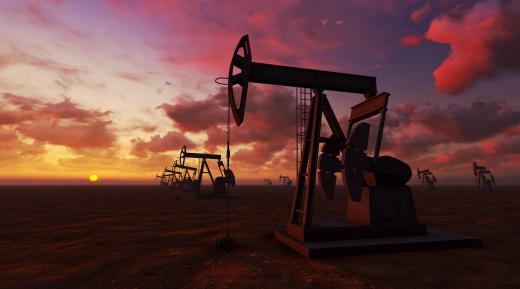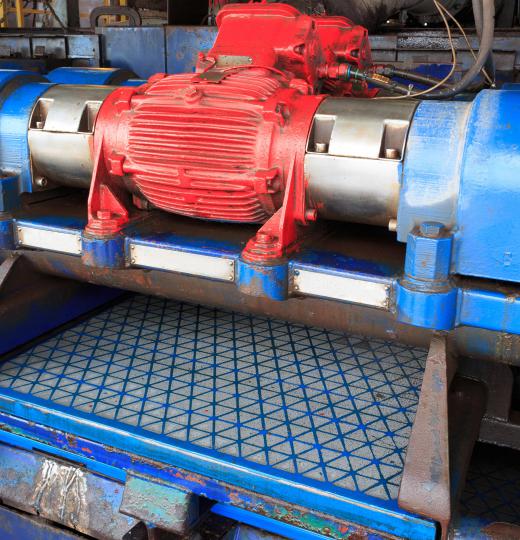Horizontal drilling is a technique for oil and natural gas extraction involving a well dug parallel to the wellbore, with the assistance of flexible piping, allowing people to go sideways in addition to straight down. This technique is an example of directional drilling, a practice developed by the oil and gas industry to increase yields, efficiency, and safety. There are a number of settings where this type of well can be useful, ranging from shallow deposits that cannot be accessed with a vertical well to relief wells, where pressure on a well needs to be reduced with the use of a second well to prevent a blowout.
In horizontal drilling, workers start by going into the earth at a low angle, gradually increasing the angle to hit the target. They use flexible piping with a mud motor assembly. Instead of turning the entire length of pipe to rotate a drill bit, drilling mud is piped through the tubing to rotate a freely spinning head mounted at the end. This drill bit works through the substrate, dragging the piping along with it.

For some deposits of natural resources, traditional vertical wells are not practical. When deposits are shallow, it can take an extended period of time for deposits of oil to move towards the borehole. Going horizontally, people can drill through the deposit and collect oil; this technique has a similar effect to vacuuming under a table or other tight space with a slanted hose attachment that fits underneath. This eliminates the need to sink multiple wells to fully access a shallow deposit and also increases the efficiency of resource extraction.

Horizontal drilling is more expensive, but it pays for itself. The greater yield from individual wells makes up for the added cost of sinking them in the first place. The technique also allows people to reach otherwise inaccessible deposits, such as oil located under roads or sensitive geologic features. Using survey techniques, people can pinpoint the location of the deposit and dig a horizontal well to get to it without needing to drill straight down. In fact, some oil-producing nations have accused neighbors of using horizontal drilling to get to their deposits!
In the case of a relief well, horizontal drilling creates a method for accessing the area without disturbing the original well and risking a blowout while drilling. Once the well is established, it can be used to pump fluids designed to stop the flow into the unstable well. Ideally this is done before a blowout occurs. If a well does experience a blowout, sinking relief wells will be part of the “kill” effort to stop the uncontrolled flow of oil and gas from the damaged well.
Ever since she began contributing to the site several years ago, Mary has embraced the exciting challenge of being a About Mechanics researcher and writer. Mary has a liberal arts degree from Goddard College and spends her free time reading, cooking, and exploring the great outdoors.

